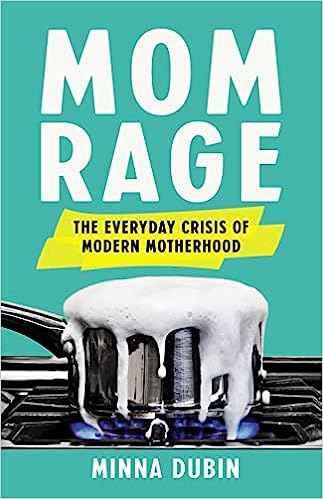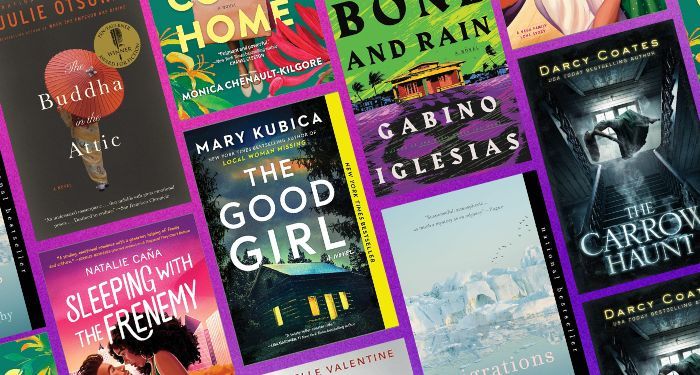I Brought My Kids On Tour For A Book About Motherhood
People told me not to write about mom rage. (Consider the internet trolls! Consider your children!) They cautioned me not to publish under my real name. (It will follow you for the rest of your life!) When my book published, they said I should definitely not bring my kids on book tour. (It’s your moment to be an author!)
This advice came from other mom writers. I paid close attention, weighed these warnings in my hands. Was I being given sacred protection? Or was I a wayward mother being gently policed, shepherded back into the claustrophobic box of “good mother”? I understood I’d strayed. A “good mother” doesn’t write about the way her palms sting from slamming them on the kitchen countertop. This is not a story mothers publicly claim. It’s a story we whisper. I’ve never been good at being quiet, or subtle, so, of course I wrote the book. I used my name. And despite the high probability of it blowing up in my face, I took my two elementary-aged kids across the country for an 8-day book tour.
I knew my kids would be tired from the time-zone change, disregulated from the dissolution of routine, and that they’d likely rip loud farts at my events then cackle with delight. Even with my husband doing most of the parenting, the week would be exhausting at best. Still. This book is a career highlight! I wanted to celebrate it with my family. I fantasized that the tour would be a key experience my 6- and 10-year-old would remember. Totally worth missing school for, I said to myself as I sat in the principal’s office filling out the extensive number of forms for kids missing more than five consecutive days.
I’ve wanted to be an author for as long as I’ve wanted to be a mother, which is to say, forever. I didn’t anticipate that the two identities would end up in competition with each other. I stopped writing for years because the creative labor of mothering took every piece of me. Once I was able to write again, I found I did my best work away from the children. I tried writing in my bedroom, but their presence permeated the locked door. I left the house and wrote at coffee shops, but only ever had a couple of hours before mom-life beckoned. I crossed bridges and counties to attend artist residencies, needing to transform out of my mother-self to be my best author-self. For years I mothered and wrote like this—separately.
It’s been a decade since I began splitting myself into parts. Writing a book about mothering was a way to put myself back together. I thought bringing my kids on tour could be the next level of integration. I was ready—eager—for my children to see me as other than mother, as more than the Maker of Meals, the Bedtime Routine Warden, the Afterschool Pick-up Driver. I know I will always be a big somebody to my children, the way that all parents loom large and take up space in their children’s psyches (for better or worse), but I wanted my children to see me as a big somebody in the world. I wanted them to see how someone so ordinary—the person who smears peanut butter and honey just right on their rice cakes (only Quaker brand, plain, and lightly salted!)—can also be the person on the stage in front of a roomful of strangers. I wanted to be a model, so that they might see that their own ideas are worth cultivating and amplifying. That they too deserve an audience and a microphone. That they don’t need anybody else’s permission to step outside the box of social acceptability, to choose a wayward path, to take up space, to be humongous.
I’ve wanted to be an author for as long as I’ve wanted to be a mother, which is to say, forever.
As our family book tour approached and I prepared for my readings, I came up against a new challenge—the content of my book. My children know what my book is about. We’d had age-appropriate conversations about mom rage. My son, the 10-year-old, once ticked off a list that went, “Racism, sexism, mom rage,” which told me he had a general understanding that mom rage is a societal issue steeped in oppression and power dynamics. But it’s one thing for my kids to experience me losing my temper. It’s another for them to listen to me describe my fury and to hear themselves referred to as “rage recipient,” and then to do it again the next night, all in front of an audience. How could I be true to my craft—a good author—reading and discussing honestly the terrifying rage I write about, and also be a good mother, protecting my children from unnecessary harm?
On the plane, my children happily inhabited screenland while I scoured my book for sections that ticked all the boxes: appropriate to read in front of the kids, 7 minutes or less, engaging for an audience. By the time we landed, I’d dog-eared every engaging, child-friendly page in that book. There weren’t many. But there were enough.
The morning of my first reading, I sit with my kids at breakfast and tell them what they can expect that night. I explain that I’ll have a “conversation partner.” We’ll talk about the book itself and also about my experience of writing the book, and at some point I’ll read a section or two, and then take questions from the audience.
“I want to ask a question,” my son pipes up.
“Sure,” I smile, hiding the heat of my flaring anxiety. I have a flash fantasy of him standing up in the crowd and asking, Why do you yell at us? (a legitimate question, but a tender conversation I’d prefer to have with him privately—not in front of an audience). “Do you want to tell me your question now so I can be prepared and do a very good job answering it?”
He thinks then says, “I want to ask, ‘Have you always wanted to be a writer?’”
I’d dog-eared every engaging, child-friendly page in that book.
I nod and look away, blinking back impending tears. This child. He disarms me. He isn’t concerned with the content of my book. He is curious about his mother—the author. I may feel fragmented, but he sees the whole of me.
“Yeah, okay, great. You can just raise your hand when it’s audience question time. I’ll call on you,” I say with a grin.
That night at the bookstore, I do one of my “child-safe” readings about my complexities slipping away once I became a mother. I read that even my name disappears with everyone everywhere (at the gym, the playground, the pediatrician’s office) suddenly calling me “Mom.” My son is in the front row. When I finish reading, his hand is first in the air, arm straight, eyes set. I gesture towards him, ready for his rehearsed question.
“Why do you think everyone was calling you Mom?” he asks.
Surprised, I pause. The answer is complicated, and the section I just read basically answered it. Seventy people hold their breath waiting for my response. I buy time. “That’s a really good question,” I say slowly. The audience lets out a collective exhale with a small, knowing laugh. Then I answer his question as best I can. He nods. Energetically the audience nods too.
A few nights later, I sit in front of a crowd of mostly strangers. Someone asks about the different trends in mothering that have occurred over time. I explain that when I was a child in the early 1980s, the reigning trend was “custodial mothering,” which was a more low-key, hands-off kind of parenting than today’s “intensive mothering” era. I share, “My parents were involved in my life, but my mother wasn’t cutting my peanut and jelly sandwiches into heart shapes with a cookie cutter.” My 6-year-old daughter, who’s been drawing in a coloring book on the floor at her dad’s feet until this moment, shoots up with a whoosh and pierces the air with her slender arm.
“Yeah?” I say smiling at her.
“You cut my sandwiches into heart shapes with a cookie cutter!” The whole room laughs. My daughter recognized the way I mother her, and she unwittingly called me out!
I was embodying the idea that a person can have mom rage and still be a good mom.
“Yes, I do cut your sandwiches into hearts,” I say to her, then turn to the audience as my daughter returns to the floor with a proud plop. “As mothers, we don’t necessarily agree with the ideas behind intensive mothering, yet we’ve internalized the expectations as ideal, then find ourselves pureeing baby food from scratch, freezing it into ice cube trays, laundering and air-drying every cloth diaper, and cutting our kids’ sandwiches into hearts with a cookie cutter!” I laugh and look at my daughter. She beams. I look out at the audience, which is 98% mothers. They beam too.
In Mom Rage I write, “Motherhood is so public, and everyone has an opinion.” Yet somehow, I hadn’t considered that bringing my kids on tour would result in the public display of my mothering. My children’s presence ended up transforming my events into live enactments of some of the main arguments of my book. By interacting with my kids in loving ways I was embodying the idea that a person can have mom rage and still be a good mom, a message that everyone in those audiences and every mother who rages needs to hear, especially in a culture that views angry mothers as moral failures. And by reading from my book and discussing mom rage in front of an audience that included in my children, I was demonstrating how we can drag mom rage out of its shame corner by talking about it with our friends, our partners, and even—with care and nuance—our children.
I suppose by bringing my family on tour, I set us up to be…judged, yes, but also witnessed—by the audiences but also by each other. I witnessed my husband laden with bags of books, art supplies, candy, and other child-appeasing items, doing everything he had to do to keep the kids happy so I could completely inhabit my author self. As a mother, it was the exact support I needed. In those moments when my children refused their social mandate to sit quietly, when my daughter jumped up with excitement and my son ditched his rehearsed question for the one that bubbled up inside his good heart, they were celebrating with me, showing me that they wanted to be part of the conversation with their author mother. They raised their hands to be witnessed for their own brilliant, bold selves. They too want to be humongous. They were telling me they already are.







